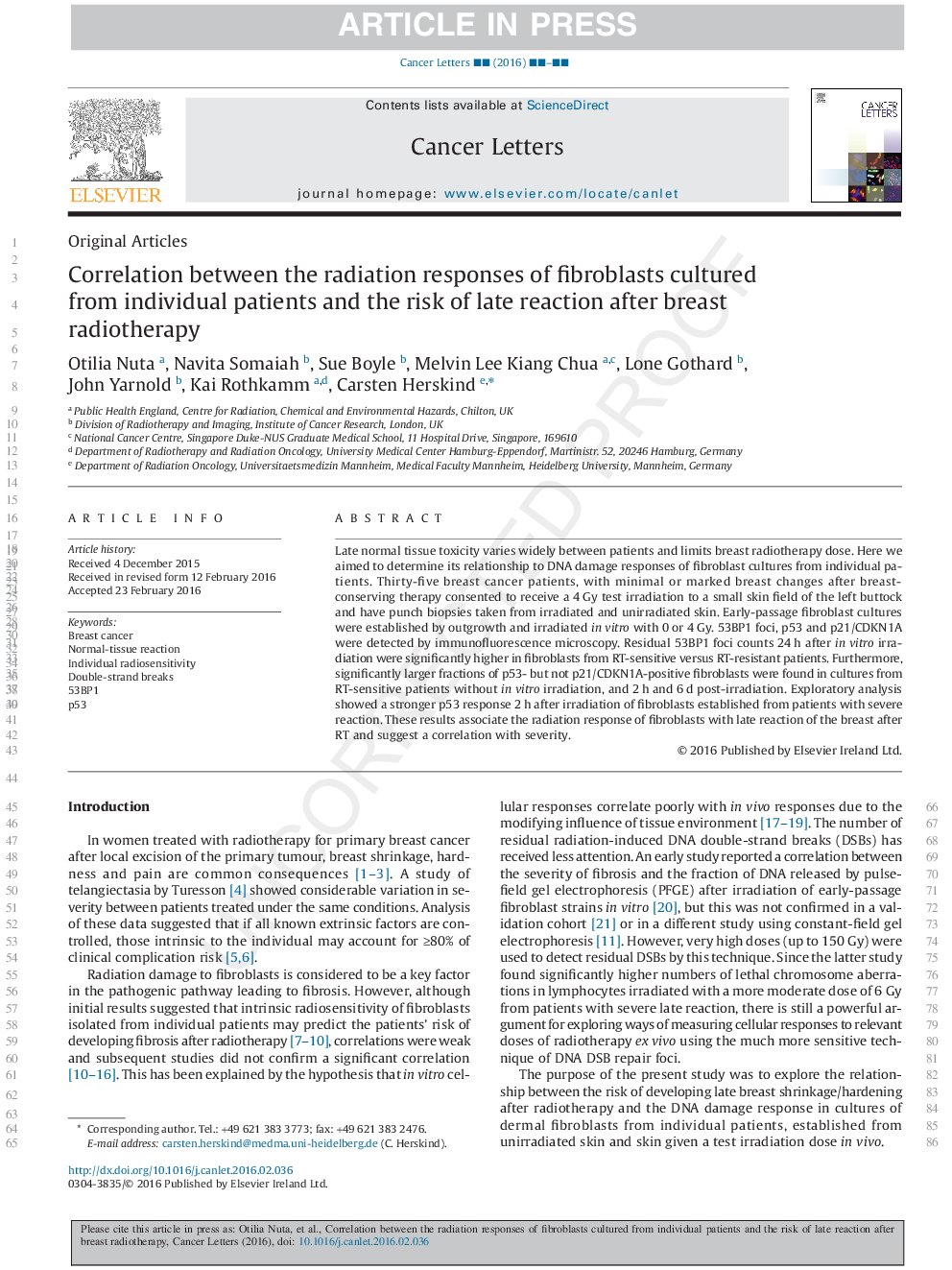| Article ID | Journal | Published Year | Pages | File Type |
|---|---|---|---|---|
| 10899363 | Cancer Letters | 2016 | 7 Pages |
Abstract
Late normal tissue toxicity varies widely between patients and limits breast radiotherapy dose. Here we aimed to determine its relationship to DNA damage responses of fibroblast cultures from individual patients. Thirty-five breast cancer patients, with minimal or marked breast changes after breast-conserving therapy consented to receive a 4âGy test irradiation to a small skin field of the left buttock and have punch biopsies taken from irradiated and unirradiated skin. Early-passage fibroblast cultures were established by outgrowth and irradiated in vitro with 0 or 4âGy. 53BP1 foci, p53 and p21/CDKN1A were detected by immunofluorescence microscopy. Residual 53BP1 foci counts 24âh after in vitro irradiation were significantly higher in fibroblasts from RT-sensitive versus RT-resistant patients. Furthermore, significantly larger fractions of p53- but not p21/CDKN1A-positive fibroblasts were found in cultures from RT-sensitive patients without in vitro irradiation, and 2âh and 6âd post-irradiation. Exploratory analysis showed a stronger p53 response 2âh after irradiation of fibroblasts established from patients with severe reaction. These results associate the radiation response of fibroblasts with late reaction of the breast after RT and suggest a correlation with severity.
Related Topics
Life Sciences
Biochemistry, Genetics and Molecular Biology
Cancer Research
Authors
Otilia Nuta, Navita Somaiah, Sue Boyle, Melvin Lee Kiang Chua, Lone Gothard, John Yarnold, Kai Rothkamm, Carsten Herskind,
